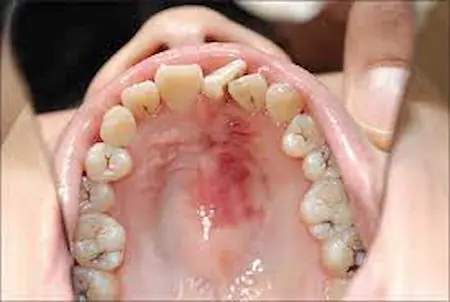What is Bruised Palate? Understanding the subtle signs and symptoms is crucial for maintaining overall well-being. One such indicator that often raises questions is palatal petechiae. Many individuals find themselves curious about its origins and whether dentists can discern its causes, especially concerning oral sex. In this comprehensive exploration, we unravel the intricacies surrounding palatal petechiae, shedding light on its potential connections and addressing common queries.
Unveiling Bruised Palate: What Are They?
Bruised Palate are tiny, pinpoint red or purple spots that can manifest on the palate, or roof of the mouth. While their appearance might be alarming, it’s essential to delve into the potential reasons behind their occurrence for a comprehensive understanding.
Signs and Causes: A Dental Perspective
Understanding the Mechanism
Palatal petechiae often result from the bursting of tiny blood vessels beneath the surface of the palate. This can be associated with various factors, ranging from trauma to underlying health conditions.
Potential Link to Oral Sex
The query about dentists discerning palatal petechiae in relation to oral sex is a topic of interest. While palatal petechiae may occur due to various reasons, their direct correlation with specific sexual activities requires nuanced exploration.
Dental Insight: Can Dentists Identify the Causes?
Clinical Examination
Dentists possess the expertise to conduct a thorough clinical examination of oral health. During routine check-ups, they may identify palatal petechiae and inquire about potential contributing factors, which can include oral trauma, nutritional deficiencies, or underlying health issues.
Communication with Patients
Open communication between dentists and patients is paramount. Dentists can inquire about lifestyle factors, including sexual activities, to gather information that might contribute to the understanding of palatal petechiae.
Common Causes Beyond Sexual Activity
Trauma and Injury
Palatal petechiae can result from trauma or injury to the delicate blood vessels in the palate. This may occur during vigorous toothbrushing, consuming hot foods, or accidental injury.
Nutritional Deficiencies
Deficiencies in essential vitamins, particularly vitamin C and K, can contribute to the formation of palatal petechiae. Dentists may recommend dietary adjustments or supplements to address these deficiencies.
Seeking Dental Guidance: What to Do if You Notice Palatal Petechiae
Prompt Dental Consultation
If individuals notice palatal petechiae or any concerning changes in oral health, seeking prompt dental consultation is crucial. Dentists can conduct a comprehensive assessment, determine potential causes, and provide appropriate guidance for further steps.
Maintaining Oral Hygiene
Consistent oral hygiene practices, including regular brushing, flossing, and routine dental check-ups, play a vital role in preventing and addressing oral health concerns.
Conclusion: Navigating the Intricacies of Oral Health
In conclusion, Bruised Palate though often associated with various causes, are a nuanced aspect of oral health. Dentists, through clinical expertise and open communication, can play a pivotal role in identifying potential factors contributing to their occurrence. Understanding the broader context of oral health empowers individuals to maintain a proactive approach, seeking dental guidance when needed.
Read More: Human Respiratory System

